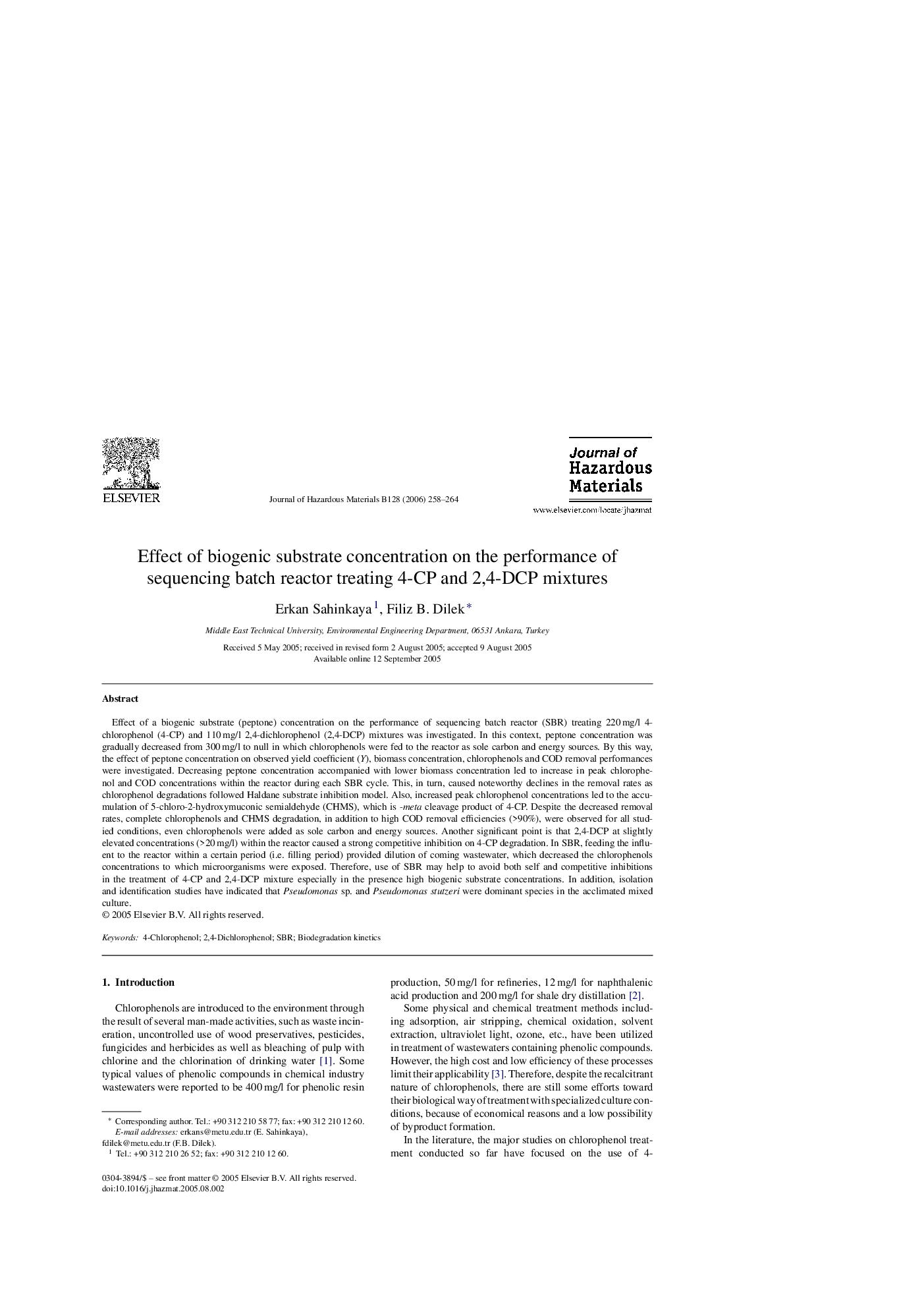| کد مقاله | کد نشریه | سال انتشار | مقاله انگلیسی | نسخه تمام متن |
|---|---|---|---|---|
| 585703 | 1453195 | 2006 | 7 صفحه PDF | دانلود رایگان |

Effect of a biogenic substrate (peptone) concentration on the performance of sequencing batch reactor (SBR) treating 220 mg/l 4-chlorophenol (4-CP) and 110 mg/l 2,4-dichlorophenol (2,4-DCP) mixtures was investigated. In this context, peptone concentration was gradually decreased from 300 mg/l to null in which chlorophenols were fed to the reactor as sole carbon and energy sources. By this way, the effect of peptone concentration on observed yield coefficient (Y), biomass concentration, chlorophenols and COD removal performances were investigated. Decreasing peptone concentration accompanied with lower biomass concentration led to increase in peak chlorophenol and COD concentrations within the reactor during each SBR cycle. This, in turn, caused noteworthy declines in the removal rates as chlorophenol degradations followed Haldane substrate inhibition model. Also, increased peak chlorophenol concentrations led to the accumulation of 5-chloro-2-hydroxymuconic semialdehyde (CHMS), which is -meta cleavage product of 4-CP. Despite the decreased removal rates, complete chlorophenols and CHMS degradation, in addition to high COD removal efficiencies (>90%), were observed for all studied conditions, even chlorophenols were added as sole carbon and energy sources. Another significant point is that 2,4-DCP at slightly elevated concentrations (>20 mg/l) within the reactor caused a strong competitive inhibition on 4-CP degradation. In SBR, feeding the influent to the reactor within a certain period (i.e. filling period) provided dilution of coming wastewater, which decreased the chlorophenols concentrations to which microorganisms were exposed. Therefore, use of SBR may help to avoid both self and competitive inhibitions in the treatment of 4-CP and 2,4-DCP mixture especially in the presence high biogenic substrate concentrations. In addition, isolation and identification studies have indicated that Pseudomonas sp. and Pseudomonas stutzeri were dominant species in the acclimated mixed culture.
Journal: Journal of Hazardous Materials - Volume 128, Issues 2–3, 6 February 2006, Pages 258–264